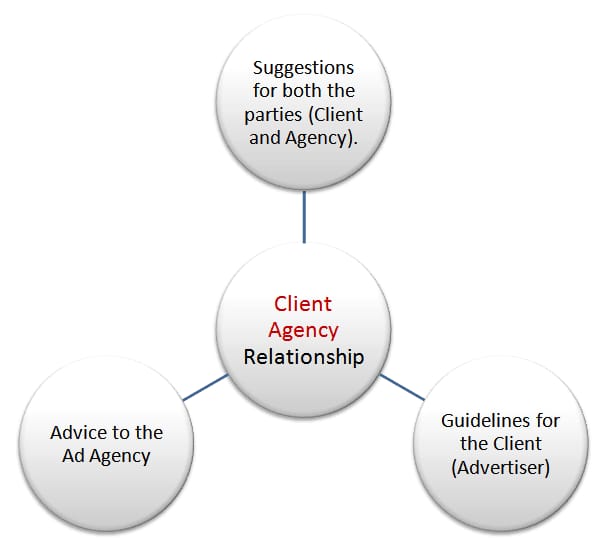.Positive agency - client relationships are the key to business success for both parties. The agency - client relationship should be a partnership. That means clients should see the agency as an extension of their marketing team. Collaboration and teamwork are important.
A. UNDER PROMISE AND OVER DELIVER-
Clients all too often find that their agency promises the world in terms of results and time lives just to secure their business, but in reality, they just can't keep their promises.
Make sure you're realistic about what you can achieve. If you can pull off a project a week ahead of the deadline,your client will be delighted. On the other hand,if you deliver a week late,you're risking in losing their business.
B.SET CLEAR GOALS AND MEASURE THE SUCCESS OF EVERY CAMPAIGN-
Your clients may not necessarily set measurable goals for each project they choose to work with you on but that doesn't mean you shouldn't. Doing good measurement to clear goals of a project always claims a good PR agency.
C.COMMUNICATE REGULARLY AND EFFECTIVELY-
It's important for your clients to be kept in the loop of what's going on with their campaigns. This way, they are actively involved in the process and have the opportunity to ask questions and request changes.
The way they can communicate with each other includes-
1. Answering emails within a set time.
2. Having scheduled weekly phone calls to discuss projects.
3. Setting up regular review meetings.
4. Sending reports and results of campaigns on a monthly basis.
D. SHOW APPRECIATION OF ALL YOUR CLIENTS-
As an agency, when your attention and resources are being pulled in many different directions at once, it can be difficult to demonstrate to all your clients just how valuable they are! This can easily happen for long - term clients, it's also common to spend more time on needy clients or those who are running campaigns with you that aren't going so well.
E. WORK TOGETHER IN PARTNERSHIP-
Encourage your clients to see your agency as an extension of their own business, not just as another service provider.
The key to building great relationships and achieving great results is to work together as partners to achieve a common goal. Make sure you take the time to listen to your clients and deliver what they truly need.
Keep your clients informed and involved with your processes so they can better understand how each member of your team can work together.
- Suchismita Das




Wow
ReplyDelete